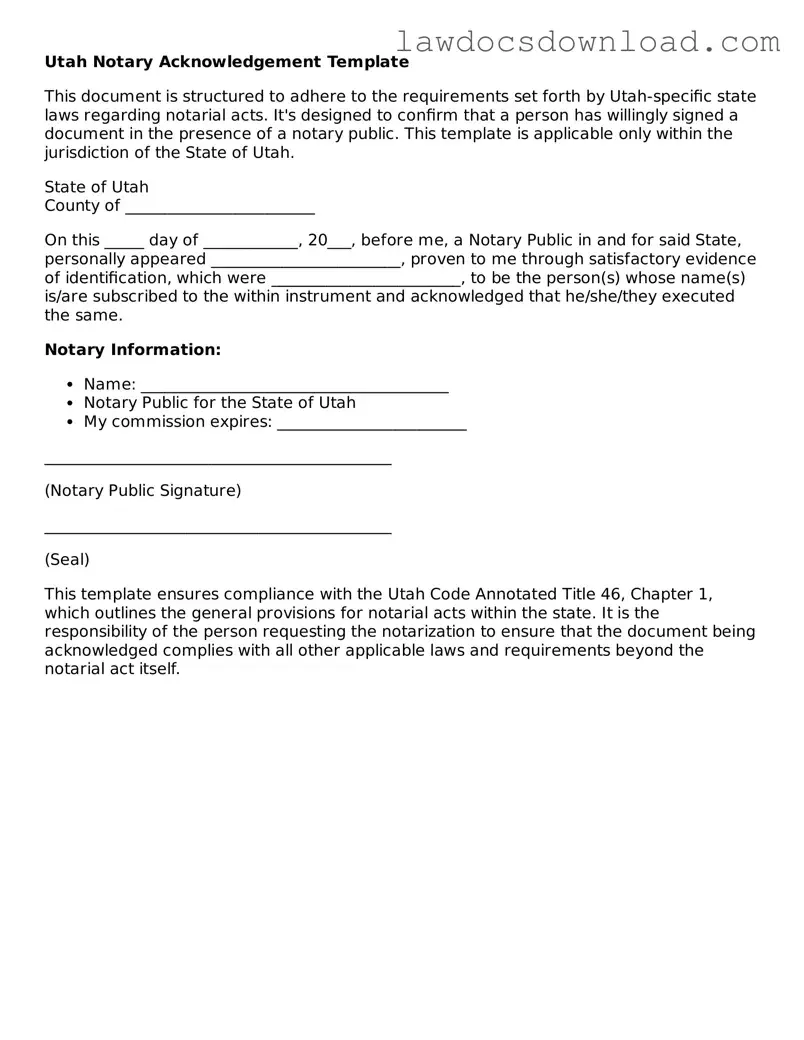Utah Notary Acknowledgement Template
This document is structured to adhere to the requirements set forth by Utah-specific state laws regarding notarial acts. It's designed to confirm that a person has willingly signed a document in the presence of a notary public. This template is applicable only within the jurisdiction of the State of Utah.
State of Utah
County of ________________________
On this _____ day of ____________, 20___, before me, a Notary Public in and for said State, personally appeared ________________________, proven to me through satisfactory evidence of identification, which were ________________________, to be the person(s) whose name(s) is/are subscribed to the within instrument and acknowledged that he/she/they executed the same.
Notary Information:
- Name: _______________________________________
- Notary Public for the State of Utah
- My commission expires: ________________________
____________________________________________
(Notary Public Signature)
____________________________________________
(Seal)
This template ensures compliance with the Utah Code Annotated Title 46, Chapter 1, which outlines the general provisions for notarial acts within the state. It is the responsibility of the person requesting the notarization to ensure that the document being acknowledged complies with all other applicable laws and requirements beyond the notarial act itself.
